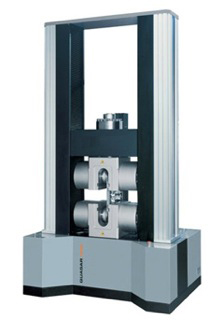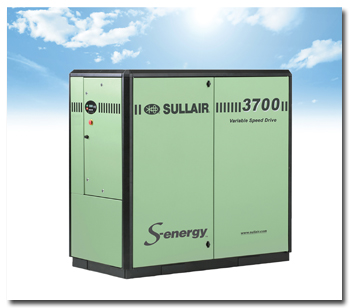If attendance at the Joint Meeting of the Southern Textile Association (STA) and the Fiber Buyers
is any indication, the trend line is heading in a positive direction for the U.S. textile industry.
The event — the 104th … ahem, the
104th! … Annual Meeting of the STA — reached a six-year attendance high of more than 230
textile executives, their spouses and guests.
And to think, the U.S. textile industry had reached its nadir in 2009 as the world followed
the U.S. economy into the doldrums. Written off by regular naysayers at the time, U.S. textiles and
the STA have bounced back, just as they have time and again over the last century-plus. After all,
this ain’t their first rodeo — and they make the rope for that, too.
The meeting returned to Myrtle Beach, S.C., at the Marriot Resort and Spa at Grande Dunes,
after a three-year run at the organization’s other favorite Palmetto State destination, Hilton
Head.
Members and guests were treated to a number of informative speakers who shed insights on the
economy, politics, energy and sustainability — all of which play a hand in the industry’s fate in
one fashion or another. Attendees ended their three-day gathering on an inspiring note with Col.
Lee Ellis, U.S. Air Force-Retired, who spent five years at the “Hanoi Hilton” as a POW during the
Vietnam War.
Just as importantly, members of each group were able to network, renew friendships and make
new industry contacts. It’s that connection, companionship and camaraderie that have helped keep
textile organizations such as STA — and, in effect, the industry — alive and thriving for decades —
against all odds, according to a number of these groups’ members.
In remarks to STA members during its business session, group President Randy Blackston of
Glen Raven Inc., Anderson, S.C., reflected on his six-year membership in the group and where it
stands today.
“When I joined STA six years ago, I heard many people talk about the heyday of STA,” he
said. “It was as if the heyday had passed and we were left hanging on to the glory of yesteryear.
“I’m proud to say a lot has changed over the past six years and I actually believe our best
years are ahead of our organization,” he added. “Right now we are gaining traction.”
To wit: STA now has 411 members, a nearly 10-percent growth since last year, Blackston
pointed out. And that expansion didn’t happen without the support and dedication of a membership
that goes the extra mile to ensure the organization will be strong and viable for years to come.
(Somewhere, STA Founder David Clark is smiling.)
“So as I stand before you today, I see the most capable textile manufacturers in the world,”
Blackston continued. “While anyone in the world can purchase textile assets, the people in this
room are the most creative people. They’re the most flexible, the most productive and the most
sustainable option for the global textile market.
“I’m very proud to be a member of an organization whose primary benefit is to provide an
opportunity to network with our peers and an opportunity to discuss items that are specific to the
textile industry,” he added.
In addition to networking opportunities, the STA also offers members the opportunity to
expand their knowledge through industry-specific education, he reminded his colleagues.
“Just think about what we have in the STA — an opportunity to meet and an opportunity to
learn with the best in the world,” he said.
“To me, this is our heyday. So it’s up to us. Let’s go, let’s spread the word and let’s take
on the future.”
During the meeting, Blackston was succeeded as president by Ed Cox of ITG-Cone Denim,
Greensboro, N.C.
First Joint General Session
Anthony Tancredi, president of Allenburg Cotton Company/Louis Dreyfus Commodities, Memphis,
Tenn., returned to the Joint Meeting for the fourth straight year and gave his always-enlightening,
always-entertaining look at the cotton market.
“I was supposed to officially title this presentation, ‘Charting the Course for Cotton,’ but
I don’t think there is a course,” he said in his opening remarks. “We went straight up in the $2
per pound range and it’s hard to say what happened. If you fly back down again, we saw some really
bizarre activity in the last two weeks. There’s enough going on in cotton, it makes no sense.”
And for the next 45 minutes or so, he tried to make sense of that volatile world,
particularly the role of India and the China reserve play. As he typically does, he interspersed
his comments with humorous videos that helped illustrate the market’s rollercoaster ride.
“If you look at the difference between production and consumption, we ended up with a huge
production surplus,” Tancredi said. “So we had a lot of people talking that cotton is not going to
trade below a dollar for at least five years. People were wondering when the low was coming. And
for a long time, the trade thought cotton had gone into a new realm, and my answer to that was,
“that dog doesn’t hunt.”
And off he went, setting the tone for other speakers during that session. Michael A. Brown,
economist with Wells Fargo Securities LLC, Charlotte, offered his insights on a number of economic
indicators in his presentation. He concluded that we should expect continued sub-par growth over
the next few quarters.
Chip Felkel, CEO of The Felkel Group, Greenville, closed the session with his take on the
2012 elections. He talked about the strategy of President Obama and challenger Mitt Romney and
factors that will come into play in the presidential race, along with offering insights into other
key races.
Second Joint General Session
Joni Davis, vice president of Large Business at Duke Energy, Charlotte, kicked off the
session by discussing her company’s merger with Progress Energy — which has since occurred — and
some of the company’s plans to continue to offer a diverse blend of energy options for consumers
and business.
Afterward, Ken Strassner principal at 3S Environmental & Energy Strategies LLC, Naples,
Fla., moderated a panel discussion on Sustainability with two of the textile industry’s own — John
Gant, manager of Sustainable Development at Glen Raven Inc., Glen Raven, N.C., and David Sasso,
vice president of International Sales & Marketing at Buhler Quality Yarns Corp., Jefferson, Ga.
In his opening commentary, Strassner gave reasons why sustainability is important to any
company doing business in today’s environment.
“Perhaps the biggest potential advantage of sustainability is its ability to help a business
ensure that it is meeting its customers’ needs and producing products in a socially and
environmentally responsible fashion,” he said.
Gant then offered up steps Glen Raven is taking to drive sustainability, before Sasso
presented Buhler’s sustainability case study.
The meeting ended on an honorable note, with Col Ellis, founder and president of Leadership
Freedom LLC, Atlanta, taking the floor. And for nearly an hour, he had attendees on the edge of
their seats as he shared stories of his imprisonment in Hanoi and lessons he learned as a result.
Some of those lessons can be used by leaders today, he told the audience. Before anything
else, he said, you must know yourself – your purpose, your passion and your personality; and then
be yourself, and trust yourself and your instincts.
He added that leaders should confront their doubts and fears, help others do so and act with
courage; build a strong culture of honesty, loyalty and authenticity; over-communicate the message;
balance mission and people; and exploit creativity.
“We have to be innovative, we have to be creative,” he said. “But cling to your values and
lead your teams with honor while innovating everything to make a profit and stay in business.
That’s doing it the right way.”
Editor’s note: Devin Steele has covered the global textile industry for 15 years. He is based
in Charlotte.
July 31, 2012






